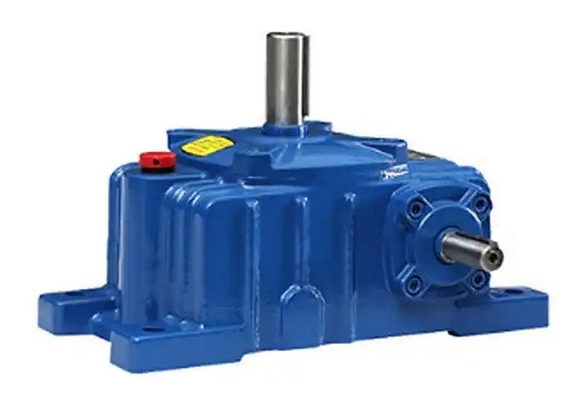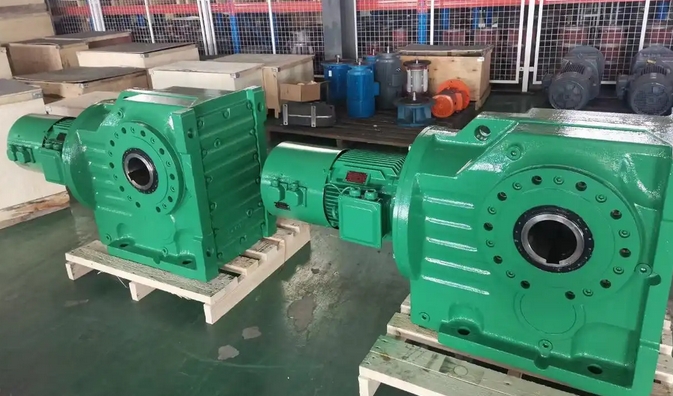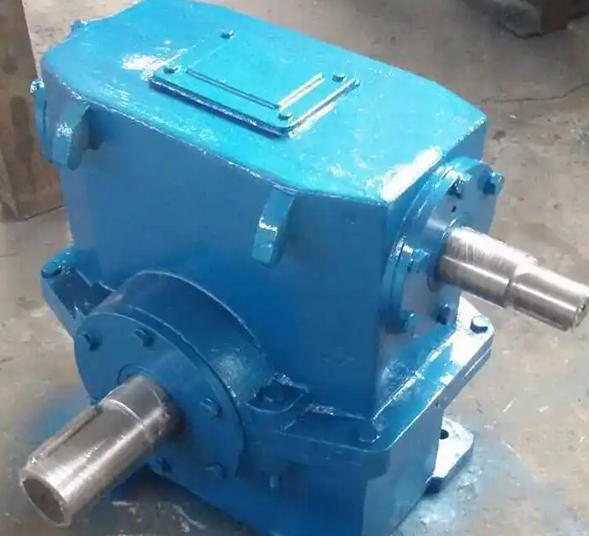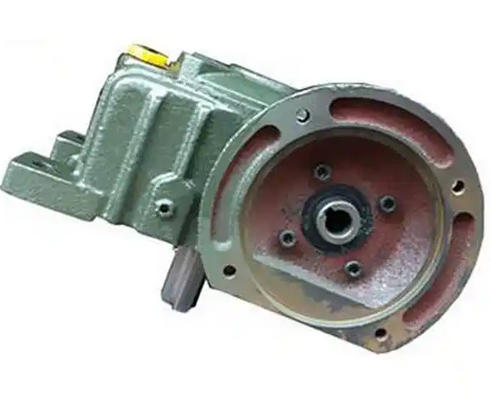How to determine if the noise of the WPO155-60-A worm gear reducer is normal
To determine whether the noise of WPO155-60-A worm gear reducer is normal, the following aspects can be taken into account:Check the meshing status of the worm gear and worm gear
Visual inspection: Stop the machine and disassemble the gearbox, observe whether there are pitting, bonding, wear grooves, etc. on the tooth surface. If the wear amount causes the tooth thickness to decrease by more than 10% of the design value, or the pitting area exceeds 30% of the tooth surface, abnormal noise may be generated and components need to be replaced.

Mesh clearance detection: Use a feeler gauge or dial gauge to measure the side clearance of the worm gear and worm. The normal clearance is usually 0.05-0.2mm, depending on the model. If the gap exceeds 0.3mm, it may cause noise due to wear or deformation, and needs to be adjusted or replaced.
Diagnosis of abnormal noise during operation: During no-load trial operation, if periodic sharp friction sounds are heard, it may be due to deterioration of tooth surface roughness; If there is a collision sound, it may be due to poor meshing or broken teeth, and the machine should be stopped immediately for maintenance.
Detect the wear of bearings
Manual rotation inspection: Remove the bearing end cover and manually rotate the worm shaft or worm gear shaft. If you feel jamming, uneven resistance, or obvious shaking, and the axial displacement is greater than 0.1mm, it may be due to bearing ball wear or damage to the retaining frame, which can cause increased noise.
Stethoscope/vibration instrument detection: Use a stethoscope to approach the bearing area. If a rustling or buzzing sound is heard, or if the vibration instrument detects an amplitude greater than 0.15mm/s and a high-frequency abnormality, it indicates that the bearing roller is worn or the lubrication has failed, which may be the source of noise and the bearing needs to be replaced.
Check the lubrication system
Lubricating oil quality and dosage: Observe the oil level through the oil gauge. If it is lower than the lowest mark, it may cause oil shortage due to leakage or volatilization, and dry friction noise is easily generated during operation. Take an oil sample for observation. If the oil turns black, turbid, or shows flocculent substances, or if the viscosity test value is below 80% of the standard value, it indicates that the oil has oxidized or contaminated, and the lubricating oil needs to be replaced and the oil tank cleaned.
Oil circuit smoothness: Check whether the oil pump is running normally, whether the oil circuit filter is blocked, and whether the oil pipe is bent or leaking oil. If the oil circuit is not smooth, it will affect the lubrication effect and lead to increased noise.
Calibration installation and alignment accuracy
Motor and equipment installation status: Check if the motor base and gearbox installation bolts are loose, and use a torque wrench to tighten them to the rated torque. Measure the plane of the motor base with a spirit level, and the horizontal deviation should be less than 0.1mm/m. If the tilt exceeds the tolerance, it will cause uneven force on the shaft system, leading to abnormal vibration and noise.
Axis alignment adjustment: use a laser centering instrument or dial indicator to measure the coaxiality between the motor shaft and the load shaft. The radial deviation is less than 0.05mm, and the axial deviation is less than 0.02mm/m. For worm gear transmission, check the perpendicularity between the worm gear axis and the worm gear axis, with a deviation of less than 0.03mm/m. If it exceeds the tolerance, adjust the gasket, otherwise periodic impact noise will be generated.
Analyze load and operational status





